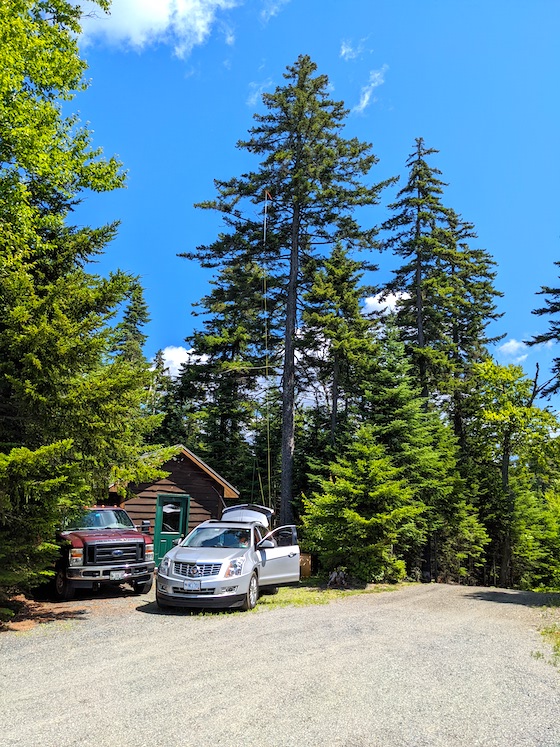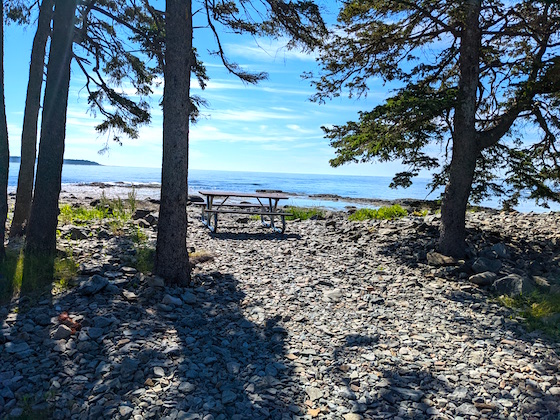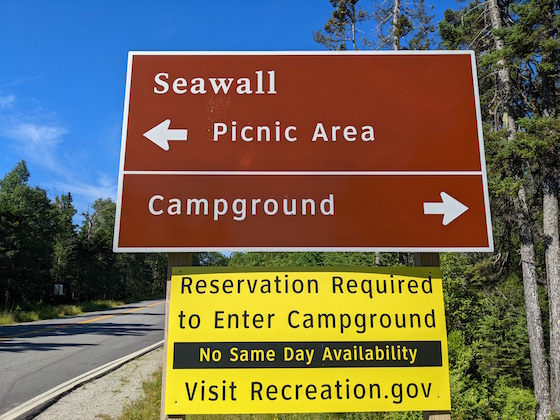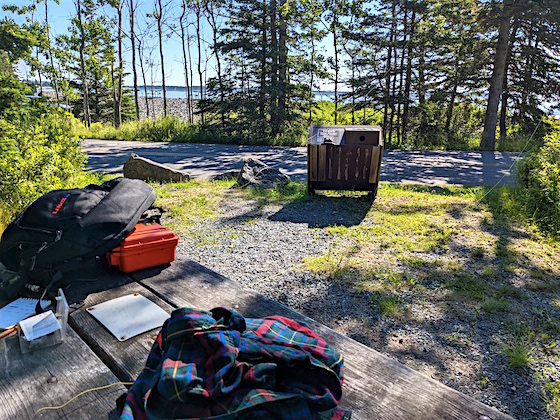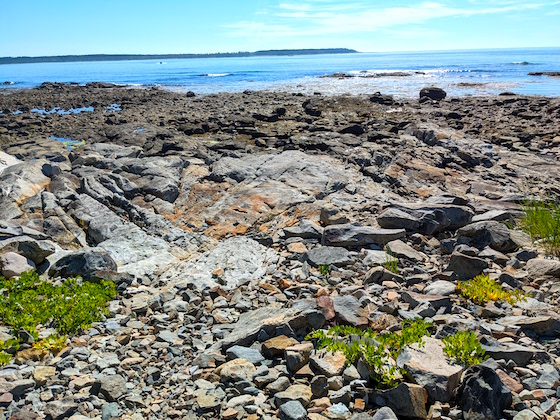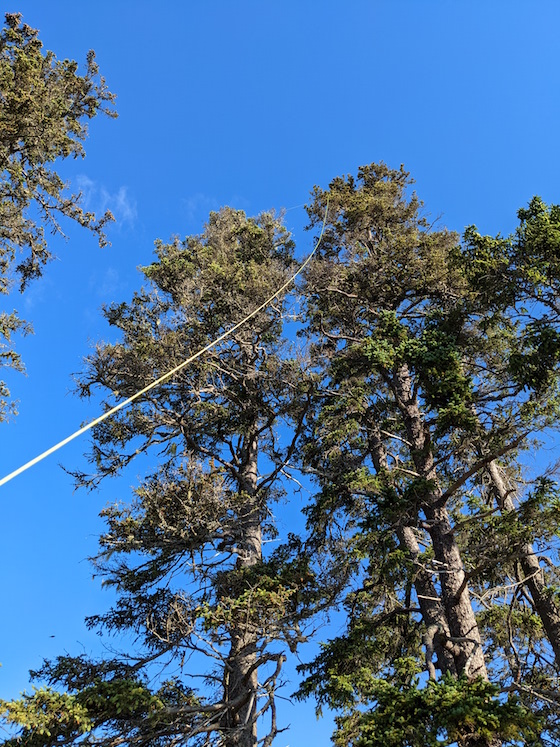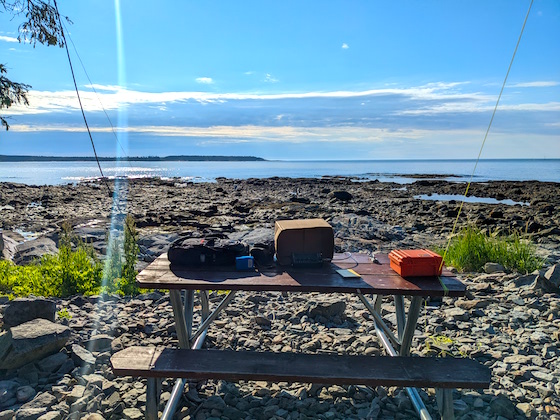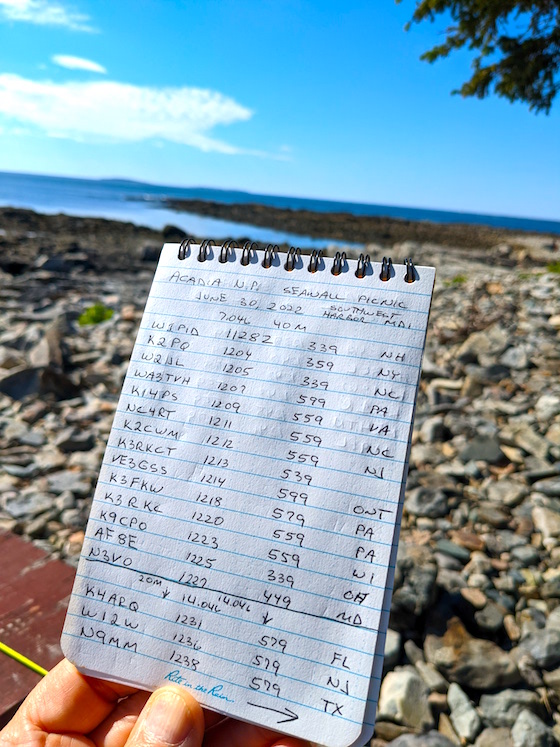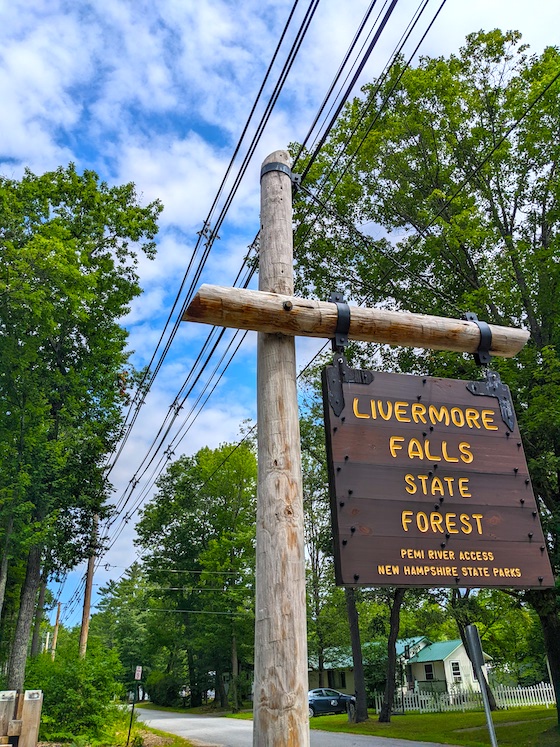
See those big black power lines above the sign? They feed power from the wretched foreign-owned windmill farm in Rumney, NH into the grid. They caused me big problems while I was here at Livermore Falls State Forest. Why aren’t the windmills owned by the New Hampshire Electric Coop? Read or watch Game of Thrones and you’ll understand why.
Livermore Falls State Forest – A Hidden Jewel
Yesterday I had the pleasure of activating Livermore Falls State Forest K-4924 as part of the popular, and growing, Parks on the Air amateur radio phenomenon. This is a popular swimming site for hundreds of people who want to cool off on a hot day in the Pemigewasset (Pemi) River that flows south from the White Mountains down to Franklin, NH where it joins the Winnipesaukee River to form the mighty Merrimack River that injects its fresh water into the Atlantic Ocean.
Livermore Fallls is the home of a very special bridge – a lenticular arch where the roadway was on top of the ironwork. Young people jump from the top of this abandoned arch into the Pemi in the summer. Serious injury and death are commonplace each year as these souls compete for the elusive Darwin Award.
Get There Early
My plan was to get to this state forest before the crowds descended upon this magical place. When I arrived at 10:10 AM, there was only one other car in the giant parking lot. I wanted to be in the shade and this immediately created a problem as I’d be just sixty feet from the high-voltage power lines that were soon to come alive. Electricity created by the bird-killing beastly windmills would soon fill the power lines creating a pesky electromagnetic interference field.
The power lines also fill the bank accounts of the Spanish royal family and their ilk that own the white gyrating eyesores.
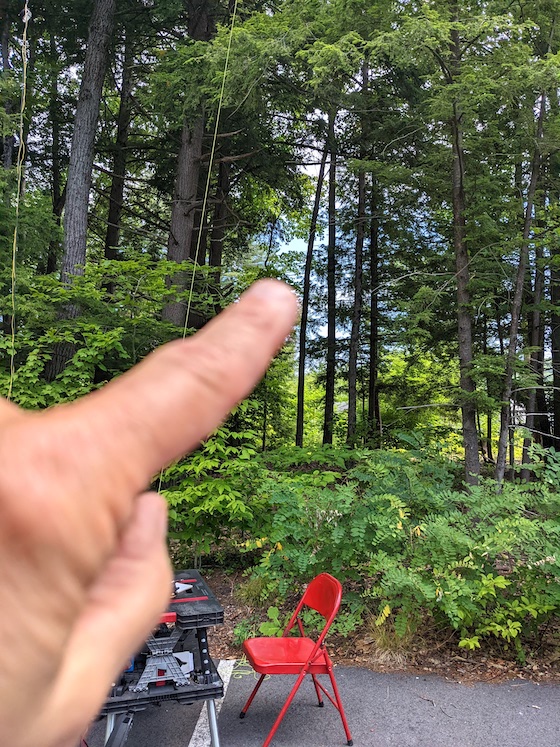
They may be hard to see through the trees, but the dastardly power lines are so very close!
Setup is Routine
I’ve had the good fortune to do so much outdoor radio that setting up to get on the air is fast and easy. I have my own routine and recently have started to add a small fold-up workbench and chair to my equipment.
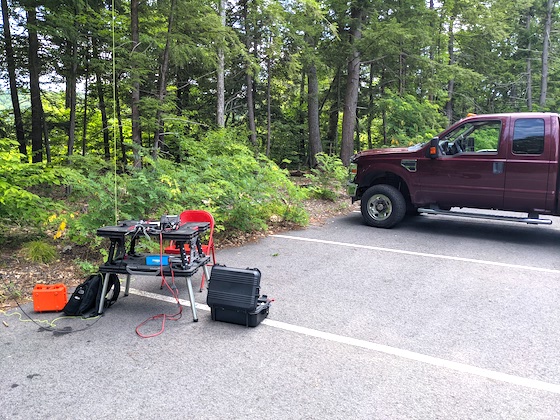
I’m just about ready to get on the air. Within an hour, this part of the parking lot would be in full sun. Let’s do this!
Last year Dave Benson, K1SWL, convinced me that I should reconsider doing my POTA activations with my low-powered Elecraft KX2 and KX3 radios. “Think about it. You want as many contacts in your log as possible and more power makes that a reality.” Dave is a legend in the QRP world as he was the founder of Small Wonders Lab. He’s the inventor of the Rockmite radio among other things.
When I know I can operate from a picnic table, or flat spot for my workbench and chair, I use an ICOM 7000 mobile HF radio. It’s rugged and I can easily pump out 80 watts through the special 9:1 unun I made with Dave’s help in the spring of 2022.
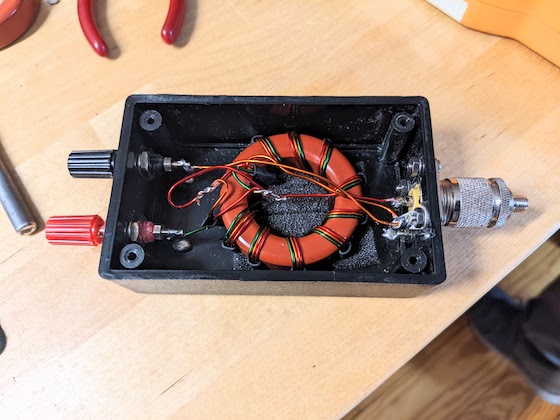
Here’s a 9:1 unun that can handle 100 watts without burning up. The more power you want to use, the larger the toroid must be to absorb that heat. This toroid in the photo is about 1.5 inches in diameter.
I use a 29-foot wire as an antenna. The unun is attached to the bottom of this wire. It hangs from a string halyard that I get into the tree using an 8-oz nalgene plastic water bottle. As usual, it only took one throw on this stunning summer day to get the bottle up and over a branch about 50 feet in the air.
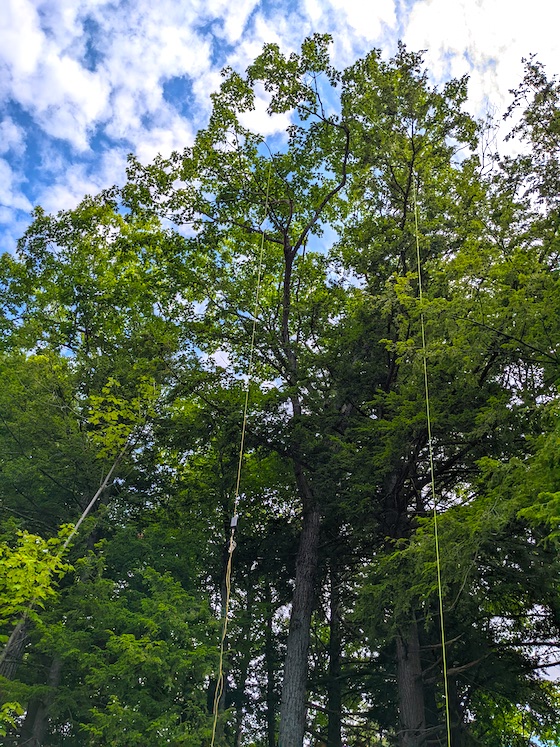
You should be able to see my antenna and the string halyard. If you can’t, then come with me one day to help me for goodness sake! Watch the video below to see how it’s done. Trust me, it takes hours of practice to release the bottle at the precise moment.
QRN – Natural Interference
I turned on my radio and immediately there was some objectionable static. I opened up the squelch as much as I could to be sure I could hear far-away operators.
The windmills were reacting to the sun heating up the atmosphere. As we all discovered in grade school science class, the infrared energy heats up the air, it rises and cooler air flows in to fill the void. This is one way wind is created. I needed to get at least ten contacts as soon as possible before the static got worse.
While the high-voltage lines running near me were installed by man, and possibly a woman or two or three, the wind is responsible for generating the electricity so I feel the Q-code that applies is QRN.
This was only the third time this POTA entity was activated and the two previous ones were done with operators who use microphones.
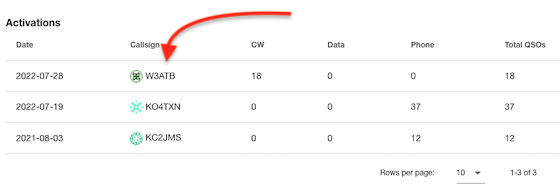
I’m a Morse code operator and there are many many similar operators at home who wanted Livermore Falls in their logbook. Soon my radio speaker started to squawk with their callsigns. It was go time.
18 in 27
I started out on the 20-meter amateur radio band. This is usually a reliable long-distance band where radio signals can easily reach halfway around the Earth Ball. Today it would allow me to put the states of Washington and Colorado in my logbook. Conditions were not the best and the electricity from the view-ruining windmills owned by Spanish royalty were doing their best to stifle my fun.
That said, I wasn’t to be denied. In just twenty-seven minutes I accumulated eighteen contacts:
- KC2JAV
- W0SK
- W7AV
- AB4KN
- K4ARQ
- AE5II
- KW4FM
- NT4F
- K5PE
- KT4UE
- K0OPA
- W5GDW
- N4RKK
- WB4ZBI
- KC9IL
- K0YY
- KI8I
- N4SD
- K9VIC
After I ran 20 meters dry I switched to 40 meters. The interference from the power lines was so bad you couldn’t hear a thing. I decided to stuff my eighteen contacts in my pocket and call it a day.
Next Time
I decided that this fall I’d come back on a stunning autumn day. When I do, I’m going to set up on the other side of the parking lot as far away from the windmill tentacles as possible. I’ll also try to pick a day when there’s no, or little wind.
If you’re a radio operator that participates in POTA, I hope to make contact with you. I’ve got lots of work ahead of me as I believe there are 193 separate POTA entities in New Hampshire! It’s time to fill the gas tank with $120 worth of fossil fuel and get moving!

